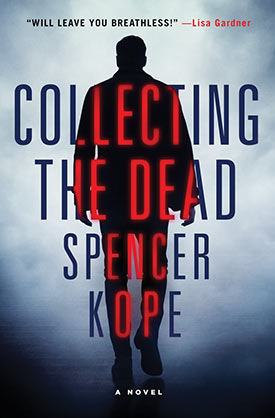
It’s been said that crime analysis is only slightly younger than crime itself.
Long before the profession came into being, people practiced crime analysis without ever putting a name to it. When someone warned a neighbor to stay away from a certain part of town after dark because they knew from experience or word of mouth that that particular chunk of geography at that particular time of day was more dangerous than others—that was crime analysis. When a cut and battered body was found on a stretch of road controlled by a remorseless highwayman and people concluded that, yes, based on the location and known criminal element, the murderer was likely the work of the highwayman and his crew—that was crime analysis.
Of course, in practice, it’s never quite that simple.
In the last several decades, crime analysis has emerged as a rare specialty position within law enforcement. You won’t find them in small agencies with less than forty or fifty commissioned officers (the International Association of Crime Analysts recommends a ratio of one analyst for every seventy commissioned officers), and even many larger agencies still don’t employ them. The trend is growing, however, and the benefits of intelligence-driven policing are becoming more apparent.
Crime analysis is about knowing all the usual suspects: that small percent of criminals that account for a large percent of all crimes. It’s about patterns, Modus Operandi, hot spots, and trends. It’s about gangs and organized criminal activity. It’s about filling in the empty pieces of the puzzle.
I suppose every agency uses their crime analysts in slightly different ways. Some place more emphasis on statistics and macro crime data that helps direct overall deployment of personnel. In my experience, cops already know that instinctively—they do crime analysis, too. For example, if you’re a cop working Beat 1 and spend your day racing from one call to the next, nearly collapsing from exhaustion at the end of the day, and your buddy is working Beat 2 and spends half the shift drinking coffee and the other half getting rid of it, then maybe you need to move some resources from Beat 2 to Beat 1. That’s crime analysis at its most basic.
I’ve always believed the most important part of my job as a Crime Analyst is providing information that helps a deputy or detective advance or solve a specific case, particularly if they’ve hit a wall and it looks like the case won’t be solved. I do this in a number of ways: I read as many reports as I can, so I’m current with everything that’s going on in the county; I familiarize myself with as many of the main players in the county as I can; three times a week, I publish an extensive summary—what many in law enforcement refer to as a blotter—outlining the most significant incidents and providing general intelligence to patrol; and I analyze individual cases to see if I can provide any of the missing pieces. It doesn’t matter if the case is a misdemeanor shoplifting or a cold-case homicide.
 In the course of doing all this analysis, I tend to generate and populate a lot of specialized databases; I’ve created standalone databases for cold cases, burglary rings, and rape investigations, to name a few. Over many years, I’ve also developed a database and a process that allows me to quickly identify a vehicle’s make, model, and year range based on a surveillance photo—even a very poor quality photo taken from an odd angle. I call that process Forensic Vehicle Analysis (FVA), and it even gets a mention in my novel, Collecting the Dead, when crime analyst Dexter Allen (a minor character) uses it to identify one more missing piece in an old homicide case.
In the course of doing all this analysis, I tend to generate and populate a lot of specialized databases; I’ve created standalone databases for cold cases, burglary rings, and rape investigations, to name a few. Over many years, I’ve also developed a database and a process that allows me to quickly identify a vehicle’s make, model, and year range based on a surveillance photo—even a very poor quality photo taken from an odd angle. I call that process Forensic Vehicle Analysis (FVA), and it even gets a mention in my novel, Collecting the Dead, when crime analyst Dexter Allen (a minor character) uses it to identify one more missing piece in an old homicide case.
After all, what’s the fun of being a crime analyst and a crime novelist if you can’t mix some of your personal experience into the story?
I don’t carry a gun or a badge, and I only go out in the field during special operations, such as warrant roundups or gang sweeps. That means I spend a lot of time at my desk reading reports (my agency generates about twenty-five thousand a year), trying to identify suspects, analyzing surveillance images, writing gang classifications and crime summaries, searching for address information on wanted subjects, and generally crunching large amounts of data. It can get tedious and mentally exhausting in a hurry, but that all washes away when you find the golden nugget that helps solve a case.
Then it’s all worth it.
Images via Shutterstock & Amazon
Don't forget! There's still time to tell us what your serial killer “calling card” would be for a chance to win a copy of Collecting the Dead by Spencer Kope and your very own custom-made calling card!
To learn more about Collecting the Dead or order a copy, visit:
opens in a new window![]() opens in a new window
opens in a new window![]() opens in a new window
opens in a new window![]() opens in a new window
opens in a new window![]()
Spencer Kope is the Crime Analyst for the Whatcom County Sheriff's Office. Currently assigned to Detectives Division, he provides case support to detectives and deputies, and is particularly good at identifying possible suspects. In his spare time he developed a database-driven analytical process called Forensic Vehicle Analysis (FVA) used to identify the make, model and year range of vehicles from surveillance photos. It's a tool he's used repeatedly to solve crimes. Collecting the Dead is his first novel. One of his favorite pastimes is getting lost in a bookstore, and he lives in Washington State.
